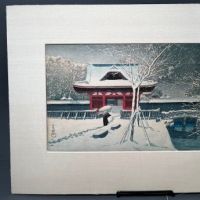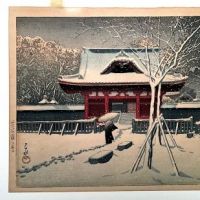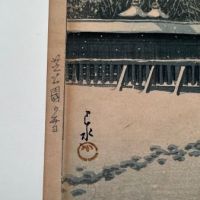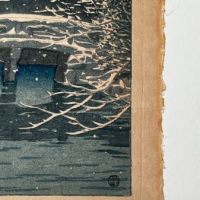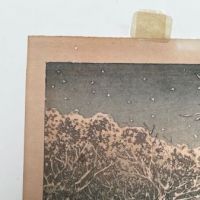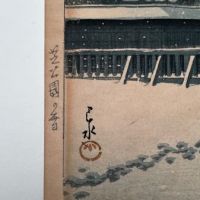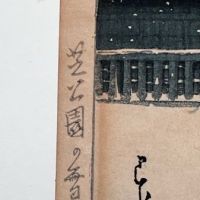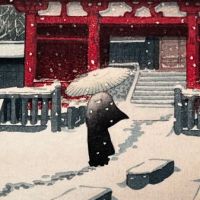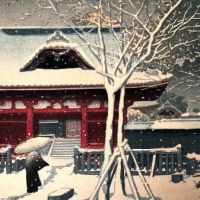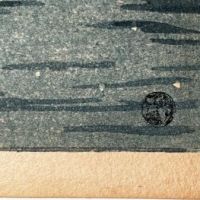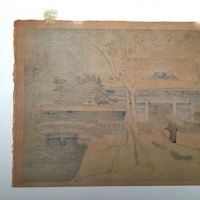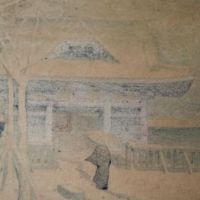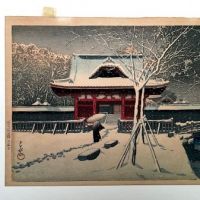Kawase Hasui Woodblock Shiba Park in Snow Tokyo 1931 Publisher Watanabe with 6 mm Seal
Shiba Park in Snow, Tokyo (Shiba koen no yuki)
View of the Temple with Snow at Shiba Park in Tokyo
year: 1931
Publisher: Watanabe
Signs: Hasui
6 mm seal on lower right
CATALOGUE RAISONNÉ: Brown, Kawase Hasui (2003), #244
A lone figure walks towards the gate to Shiba Park, which is built around Zojoji Temple in Tokyo. One of Hasui’s strong and most notable subjects, snow. His ability to capture the cold, brisk and tranquility you have in snow. You can see the figure walks in the footsteps of others before them. A beautiful image by the master.
Size: 15 1/4 x 10 3/8 Oban size
Condition: very fine with strong colors. Light toning to the margin edges. Lower left has small toning to edge of image, please see images for details. The image has not been trimmed. Back is very fine with top edge having archival hinge tape. No damage or alteration to the woodblock.
If you have any questions or if you need additional images, please feel free to contact me.
Note:
Over seas buyers please contact me before purchase with postal code to get a shipping quote. Shipping cost posted is for Domestic shipping only.
“Hasui Kawase (1883 –1957) was an artist, one of modern Japan's most important and prolific printmakers. He was a prominent designer of the shin-hanga ("new prints") movement, whose artists depicted traditional subjects with a style influenced by Western art. Like many earlier ukiyo-e prints, Hasui's works were commonly landscapes, but displayed atmospheric effects and natural lighting. Hasui designed almost one thousand woodblock prints over a career that spanned nearly forty years. Towards the end of his life the government recognized him as a Living National Treasure for his contribution to Japanese culture.”
Referred to most simply as Hasui, his woodblocks have been highly collectable for years. To See his woodblocks you are immediately drawn to the details, especially in his snow and rain scenes and his night scenes. Unlike traditional woodblocks of the 19th century his scenes were emotional and not stories or folk tales or stories.

